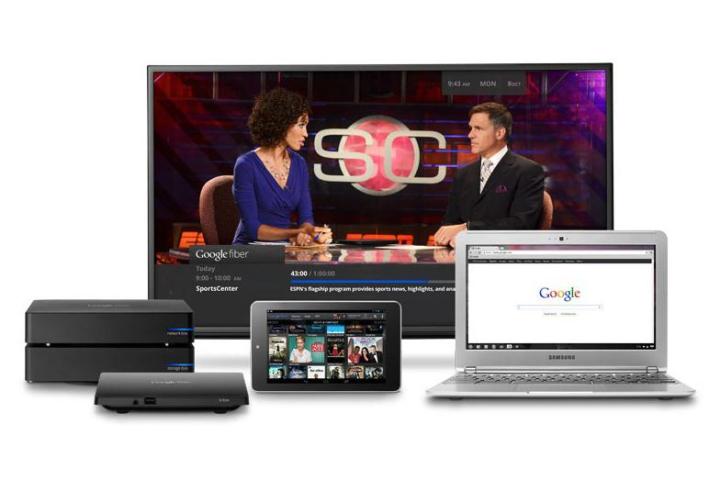
Today, Google announced its latest plans to install Google Fiber internet service in Provo, Utah, which was the third city that the search giant announced for its Internet rollout plan. The company is in the middle of upgrading the city’s existing fiber network to make it ready for the insane speeds that Google is bringing to town. Google’s currently in talks with property managers to get Google Fiber lines installed in apartment buildings and other large complexes.
However, with the relatively new state of gigabit Internet and its limited rollout thus far, you may not know exactly what Google Fiber is and what it means for consumers. That’s okay, though, as you still have plenty of time before Google Fiber most likely reaches your area. In the meantime, here’s a quick primer to Google Fiber and why you should be jealous of the cities that are getting it soon.
What is Google Fiber?
Google Fiber is an Internet and television service provided by Google itself, and plans range from 5Mbps all the way to a blistering fast 1Gbps (or 1,000Mbps). The service also provides television channels for an extra monthly charge, but to put 1Gbps speeds into perspective, you could theoretically download a full 1080p movie in about a minute. Of course, you most likely won’t get the full 1Gbps speed, since the connection loses a bit of quality from traveling through different loops before reaching your house. So, let’s just say a 1080p movie can download in about five minutes – still, that’s incredibly impressive.
Where is Google Fiber available?

However, other ISPs are attempting to put a dent into Google Fiber by releasing their own gigabit network in competing cities, with AT&T announcing gigabit availability in Austin, Texas just days after Google unveiled its plans. Seattle is another city planning to implement gigabit Internet, thanks to an agreement with Seattle-based startup Gigabit Squared.
If you’re wondering why Google Fiber isn’t available everywhere yet, or gigabit Internet in general for that matter, it mostly has to do with your areas Internet network infrastructure. Only a handful of cities in the U.S. are wired up for fiber optics, which means there’s only so many places that you can get Google Fiber or other gigabit Internet service. For instance, Verizon’s FiOS fiber optic Internet service is only available in a few states, and in those few states only a few cities are equipped with the necessary infrastructure to get gigabit Internet speeds. In order for ISPs to offer gigabit Internet to residents in a city, the infrastructure has to be upgraded, and that in itself can be a challenge, thanks to government roadblocks and encouraging private property owners to get in on the upgrade.
What plans are available?
Google offers three different Google Fiber plans:
- 5Mbps Internet for $0/month (one-time construction/installation fee)
- 1Gbps Internet for $70/month (fee waived)
- 1Gbps Internet with TV for $120/month (fee waived)

The free 5Mbps Internet service that Google is offering with Fiber is particularly interesting. It’s the basic of the basic, of course, but this is the type of DSL service that many ISPs charge as much as $40 a month for, and sometimes even more, depending on your location. Furthermore, Google guarantees that the price of the 5Mbps plan (or lack thereof) won’t be raised for at least seven years.
As for the faster plan, the 1Gbps service comes with a bevy of perks, including 1TB of Google Drive storage with the television service equipped with a 2TB DVR recorder in addition to the Google Drive storage. The DVR can also record up to eight live television shows at once. Along with all that, customers who get the Internet and television package will also receive a free Nexus 7 that is used as the remote control of sorts for the system, and you’ll be able to stream live content to the tablet as well.
What can I do while I wait for Google Fiber?
There’s really nothing you can do except pray that Google Fiber comes to your city. It’ll be a long time before it reaches every nook and cranny of the U.S. (if it even does), so if you don’t live in one of the Kansas Cities, Austin, or Provo, Google Fiber might as well be a dream about an Internet service that you wish you had. Other than that, keep getting used to paying way more for Internet and TV service than you should.
Editors' Recommendations
- How to change theme colors in Google Slides
- How to change margins in Google Docs
- How to delete a file from Google Drive on desktop and mobile
- The best resume templates for Google Docs
- 5 web browsers you should use instead of Google Chrome or Edge


